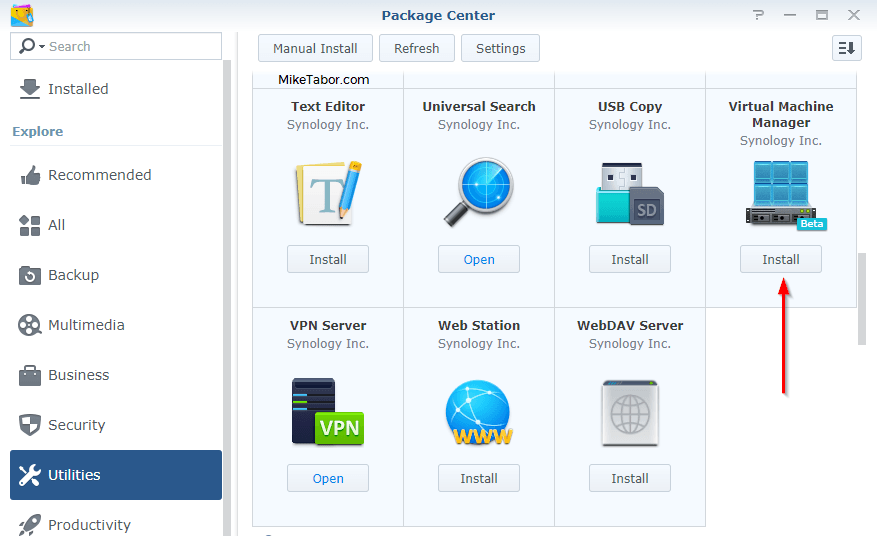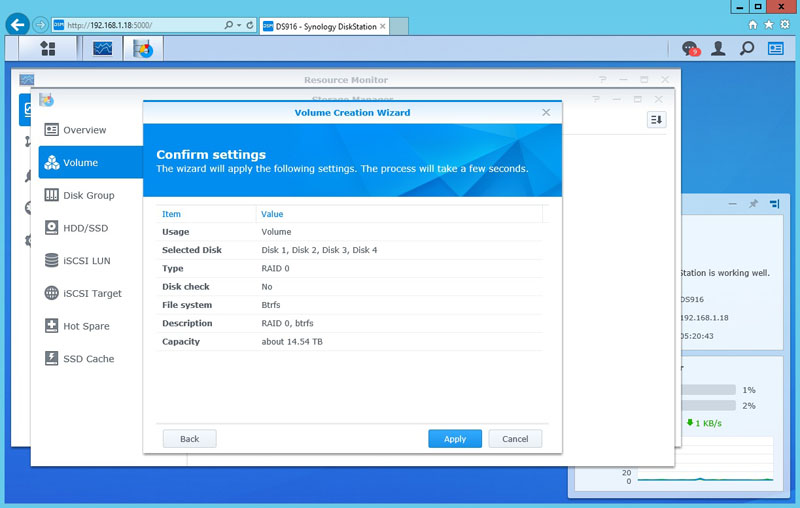

Self-hosters who use Synology as their go-to network-attached storage device rely heavily on container management for running their applications. Immutable Snapshots: The new Immutable Snapshots in Snapshot Replication safely store immutable copies of users' data to defend against compromised administrator credentials.
Synology volume manager full#
Full-Volume Encryption: Full Volume Encryption allows for the protection of Shared Folders, LUNs, and package data against physical theft of system and drives.Turbocharge VM Performance: M.2 NVMe storage volumes allow users to speed up larger volumes with SSD cache or create all-flash storage volumes.Block-Level Full-System Backups: The new support for block-level full-system backups in Hyper Backup significantly speeds up the backup process for a large amount of data.Adaptive Login Protection: The new Adaptive Multi-Factor Authentication (AMFA) feature now requires confirmation when DSM admin accounts are accessed from untrusted external connections.

New Defenses Against Attacks: The new Auto Block in DSM 7.2 covers Server Message Block connections, reducing the chances of brute-force attacks succeeding against weak user credentials.Synology Photos: The photo album management system now supports WebP and motion photos (Android) and has improved user functionality.
Synology volume manager update#

For a list of trademarks of The Linux Foundation, please see our Trademark Usage page.The DSM 7.2 update from Synology offers improved cyber security, data backup efficiency and container management, making it more flexible and secure for self-hosters. The Linux Foundation has registered trademarks and uses trademarks. © Prometheus Authors 2014-2023 | Documentation Distributed under CC-BY-4.0 Please help improve it by filing issues or pull requests. The following third-party contributions: Ansible If you prefer using configuration management systems you might be interested in With some tooling or even have a daemon update it periodically. Ī more advanced option is to render the configuration dynamically on start Now build and run it: docker build -t my-prometheus. This works well if theĬonfiguration itself is rather static and the same across allįor this, create a new directory with a Prometheus configuration and aĭockerfile like this: FROM prom/prometheus To avoid managing a file on the host and bind-mount it, theĬonfiguration can be baked into the image. Or bind-mount the directory containing prometheus.yml onto

v /path/to/prometheus.yml:/etc/prometheus/prometheus.yml \ Here areīind-mount your prometheus.yml from the host by running: docker run \ To provide your own configuration, there are several options. To ease managing the data on Prometheus upgrades. Production deployments it is highly recommended to use a The Prometheus image uses a volume to store the actual metrics. This starts Prometheus with a sampleĬonfiguration and exposes it on port 9090. Running Prometheus on Docker is as simple as docker run -p 9090:9090
Synology volume manager download#
Out the download section for a list of allįor building Prometheus components from source, see the Makefile targets inĪll Prometheus services are available as Docker images on We provide precompiled binaries for most official Prometheus components.


 0 kommentar(er)
0 kommentar(er)
